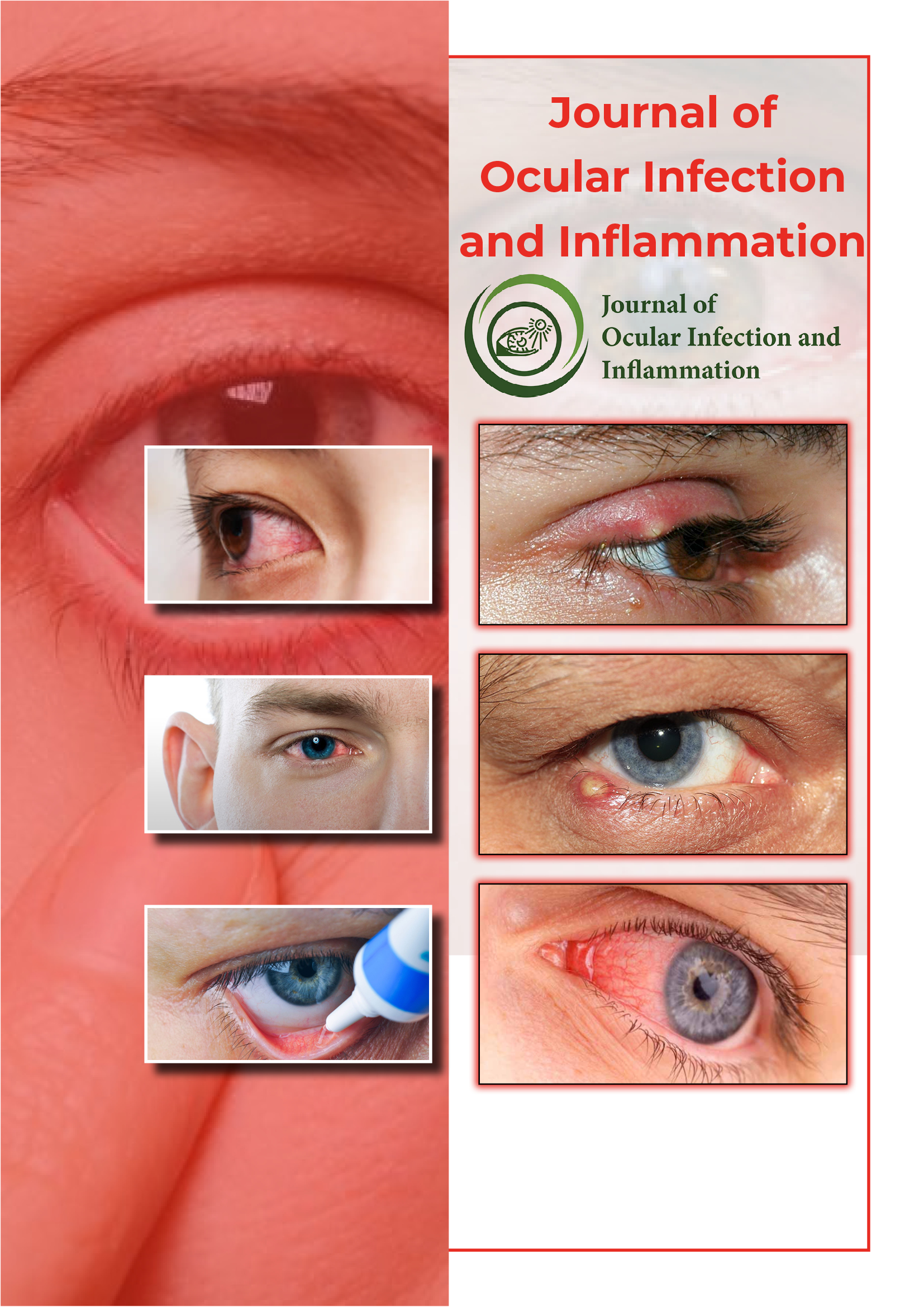Useful Links
Share This Page
Journal Flyer

Open Access Journals
- Agri and Aquaculture
- Biochemistry
- Bioinformatics & Systems Biology
- Business & Management
- Chemistry
- Clinical Sciences
- Engineering
- Food & Nutrition
- General Science
- Genetics & Molecular Biology
- Immunology & Microbiology
- Medical Sciences
- Neuroscience & Psychology
- Nursing & Health Care
- Pharmaceutical Sciences
Commentary - (2025) Volume 6, Issue 1
Viral Conjunctivitis Outbreaks in Urban Schools: An Epidemiological and Clinical Review
Jason Mullendorf*Received: 26-Feb-2025, Manuscript No. JOII-25-29240; Editor assigned: 28-Feb-2025, Pre QC No. JOII-25-29240 (PQ); Reviewed: 14-Mar-2025, QC No. JOII-25-29240; Revised: 21-Mar-2025, Manuscript No. JOII-25-29240 (R); Published: 28-Mar-2025, DOI: 10.35248/JOII.25.06.130
Description
Viral conjunctivitis, particularly that caused by adenovirus, continues to represent a significant public health concern, especially in densely populated environments such as urban schools. This form of ocular infection, while often self-limiting, exhibits high transmissibility and poses a considerable risk for outbreaks that can disrupt academic schedules, increase healthcare costs, and occasionally result in long-term sequelae if improperly managed. Despite these implications, the epidemiological behavior and containment strategies of viral conjunctivitis outbreaks in school populations remain inadequately addressed in literature.
A two-year observational study was conducted in the metropolitan area of Stockholm, where ten public schools experienced clusters of viral conjunctivitis affecting students aged 6 to 15 years. The aim was to assess the scope, symptomatology, transmission dynamics, and response efficacy in managing these outbreaks. A total of 483 conjunctivitis cases were documented, with clinical confirmation by pediatric ophthalmologists in 312 cases. Adenovirus serotypes 8, 11, and 19 were the predominant causative agents identified through polymerase chain reaction testing.
Most outbreaks originated from a single index case and spread rapidly within classrooms within a span of 48 to 72 hours. The average attack rate per outbreak was 13.5%, with peak spread observed in the 8-11-year age group. Poor hygiene practices, shared classroom materials, and limited awareness were cited as primary contributors to the rapid escalation of cases. Symptoms ranged from mild hyperemia and tearing to severe follicular conjunctivitis with preauricular lymphadenopathy and keratitis in about 14% of cases.
Interestingly, in three of the outbreaks, the implementation of isolation protocols, surface disinfection routines, and hygiene education significantly curtailed spread within five days. Schools that delayed response by more than 72 hours saw sustained transmission lasting up to three weeks. Teachers and school staff were affected in 9% of outbreaks, highlighting the occupational risk and necessity for inclusive prevention strategies.
Antiviral treatments were not employed, given the self-limiting nature of the infection and the lack of approved topical antivirals for adenoviral eye infections. Supportive therapy with artificial tears, cold compresses, and antihistamines was widely used, although not shown to influence disease duration significantly. Return-to-school recommendations were standardized to a minimum of seven days post-symptom onset or after resolution of active discharge, yet compliance varied due to socioeconomic constraints on parents and guardians. From a public health standpoint, the findings underscore the importance of rapid case identification, communication with local health authorities, and adherence to standardized infection control measures.
Introducing hand hygiene programs and limiting communal supplies (such as towels and eye drops) proved especially beneficial in reducing secondary transmission. Furthermore, educational interventions directed at students, teachers, and parents played a critical role in improving compliance and understanding of the infection’s contagious nature.
To mitigate future risks, the study recommends that school systems implement standardized protocols for managing infectious eye diseases, establish communication channels with local ophthalmology departments, and include ocular hygiene in health curricula. The development of rapid point-of-care testing for adenovirus conjunctivitis could also aid in early identification and differentiation from bacterial causes, thereby improving response strategies.
Viral conjunctivitis remains a highly transmissible ocular infection with significant implications for public health, particularly in crowded institutional environments like schools. Through timely intervention, hygiene education, and coordinated response strategies, its spread can be effectively curtailed. A multifaceted approach involving healthcare providers, educators, students, and families is essential for minimizing disruption and safeguarding ocular health in pediatric populations.
Citation: Mullendorf J (2025) Viral Conjunctivitis Outbreaks in Urban Schools: An Epidemiological and Clinical Review. J Ocul Infec Inflamm. 06:130.
Copyright: © 2025 Mullendorf J. This is an open-access article distributed under the terms of the Creative Commons Attribution License, which permits unrestricted use, distribution and reproduction in any medium, provided the original author and source are credited

